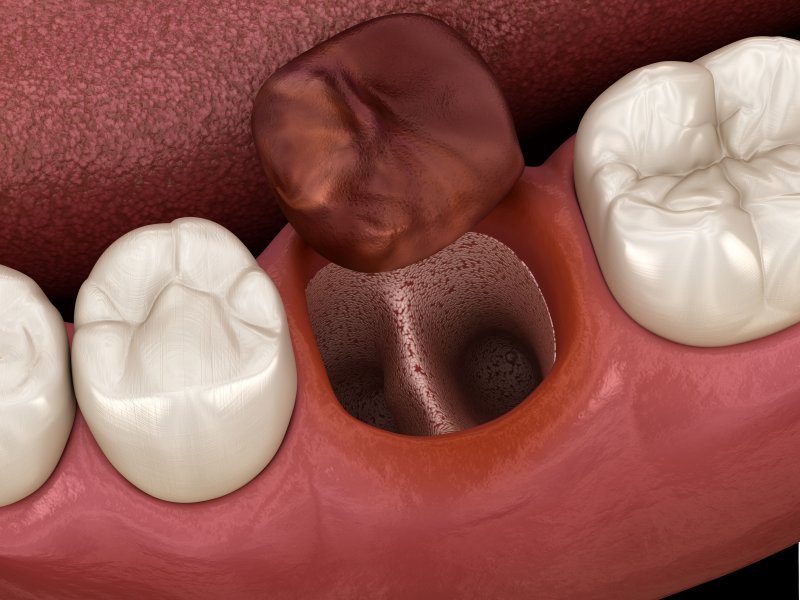
If you have a severely damaged or decayed tooth that cannot be saved with restorative solutions, like dental crowns or root canal treatment, your dentist may recommend tooth extraction. Although this is unlikely to be the news you want to hear, removal can be the most effective and beneficial option for safeguarding your oral health. While your focus might be on what the procedure requires, there is something you also need to be mindful of when it comes to your recovery – a dry socket. Keep reading to learn more about what it is, how you can prevent it, and what you should do if you think you may be experiencing one.
What is a Dry Socket?
A dry socket is a condition that occurs after a tooth is extracted and often causes intense pain. A blood clot must form over the surgical area to not only ensure proper healing but also protect underlying nerves and bone. However, if the clot dislodges for any reason, a dry socket will form.
When this happens, patients often experience immense pain, swelling, and irritation. Without timely treatment, food can enter the space and cause additional discomfort. Infection is also possible.
How Can You Prevent It?
After having a tooth removed, your dentist will send you home with aftercare instructions, which you will need to follow if you want to avoid potential complications. Since a dry socket is the most common problem after extraction, there are several tips your dentist will provide to help you avoid this scenario, such as:
- Do not smoke or use tobacco products during your recovery, as this can slow the healing process and increase the chances of a dry socket.
- Do not use a straw to sip beverages. The suction can dislodge the clot.
- Do not spit when rinsing your mouth, and avoid swishing vigorously. Instead, allow the liquid to fall out of your mouth and into the sink or tissue.
- Do not touch or prod the surgical area with your finger or tongue.
- Do not engage in vigorous exercise or activities immediately following your tooth extraction.
When Should You See a Dentist for Help?
Post-procedural discomfort is normal after tooth extraction; however, if you notice that you are experiencing severe pain after several days, there is a good chance you have a dry socket. Other symptoms may include:
- Pain radiating to your ear, eye, neck, or throughout the side of your face with the surgical site.
- A bad taste develops in your mouth.
- Bad breath.
- Bone is visible inside the socket.
If you develop any of these signs, do not wait to see your dentist. By calling their office right away, they can help alleviate the discomfort by using medicated paste and dressing or providing an anti-inflammatory pain medication.
Post-extraction recovery is an important part of the overall process; by making sure you follow the necessary aftercare instructions, you can avoid a dry socket and be well on your way to a healthier, infection-free smile.
About the Author
Dr. George Hoop is a dentist in Fort Myers and Naples who graduated second in his class from the Emory University School of Dentistry with his Doctor of Dental Surgery degree. Working with individuals who require tooth extraction to improve their oral health, he and his team at Total Dental Solutions provide helpful aftercare tips to make recovery swift and easy for patients. However, should a problem arise, like a dry socket, you can contact us at (239) 594-8817. Dr. Hoop will administer appropriate treatment to help you out of pain while making sure you continue to move toward a fully healed smile.

